Everybody loves helium. You fill large party balloons with it and watch them float. You can inhale it and temporarily make your voice high pitched. However, nobody loves helium more than deep sea technical divers.
Helium is used for scuba diving for trimix diving and it allows divers to dive really deep with less risk of nitrogen narcosis and decompression sickness. When divers dive past 30 m (100 ft) while breathing only regular, compressed air, then their risk of experiencing nitrogen narcosis and decompression sickness increases. The oxygen in compressed air can become toxic under that extreme pressure, and the nitrogen can be absorbed into our bodies in such high quantities it causes narcosis, plus it takes a long time to off-gas. Helium does not have these downsides, making it optimal for deep diving.
In this article, we will discuss how helium is the solution to all of the problems breathing compressed air at depths past 30 m (100 ft) poses. We’ll also go over if helium can benefit recreational scuba divers who may not be diving so deep.
What are the dangers of compressed air?
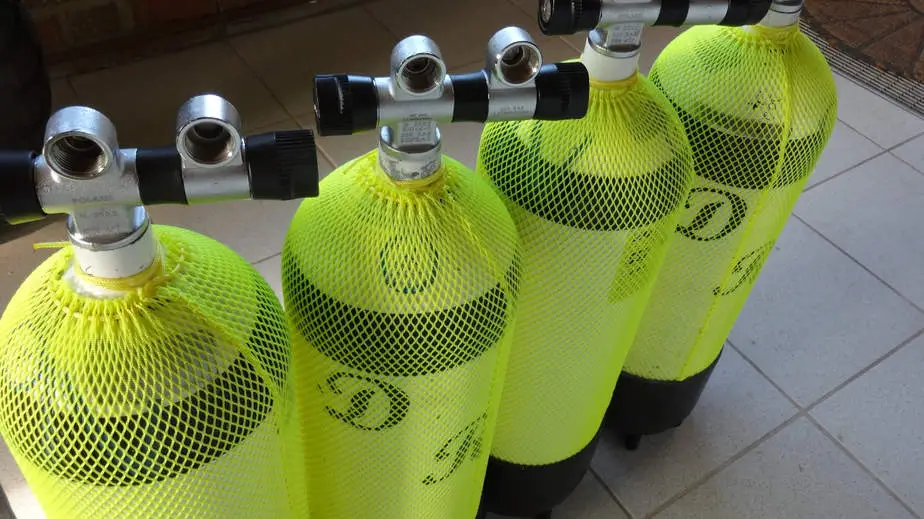
What we consider to be regular air on planet earth is a gas composed of 21% oxygen, 78% nitrogen, and 1% trace noble gases such as argon and helium. All air breathing creatures have evolved to use the 21% of oxygen in air as our primary fuel source. Even a short time without it is fatal.
So why then is breathing this life-giving air such a danger when diving deep? Unfortunately, the water pressure will cause air to compress, reducing its volume drastically. That means that a “normal” breath of air inhaled deep underwater may be equivalent to 10 breaths of air on land.
There is a point where the oxygen in the air will become toxic, which is why diving deep with compressed air can easily result in oxygen toxicity. We need to limit it using a different gas mix.
Similarly, the nitrogen found in air will also get compressed. Due to the water pressure, our bodies absorb nitrogen into our tissues to equalize with the air we breathe. This means that excessive amounts of nitrogen is in our system, and this can result in nitrogen narcosis.
As if nitrogen narcosis isn’t risky already, when nitrogen gets released too quickly due to a fast ascent, then it can result in decompression sickness. At least the effects of nitrogen narcosis will quickly dissipate as you ascend, with no lasting effects.
To reduce the chances of experiencing everything we just described above, divers use a different gas mix other than compressed air. The gas mix they use should reduce the oxygen and nitrogen concentration, but what should we replace it with? This is where helium comes in.
How does helium help scuba divers dive deep?
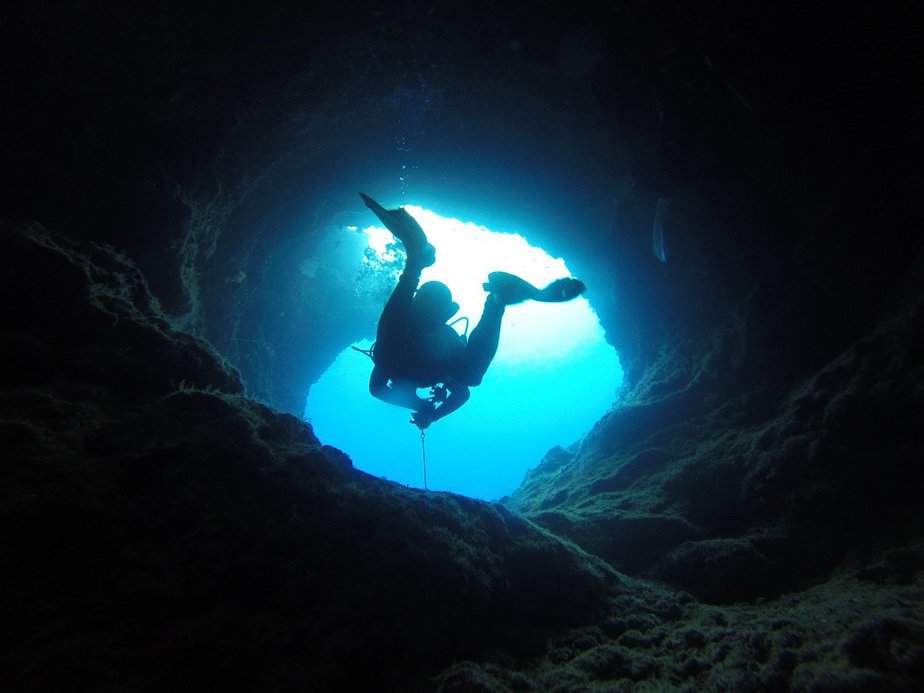
Unlike oxygen which is highly reactive, helium is a stable, inert gas. Therefore, at the depths that compressed air would result in a narcotic and toxic effect, helium would not damage us at all.
Since helium is expensive and limited, technical divers will breathe a different gas mix while descending through the shallow parts of their dive. As they exceed 30 m (100 ft), they will change their gas mixture to one that has lower oxygen and nitrogen concentration, and higher helium concentration.
It’s as simple as that. On the ascent, they can switch back to their gas mix with lower helium in order to conserve it. However, even helium has its limits. Nothing to do with pressure is straightforward and technical divers know this too well.
Even an inert, stable gas like helium will have some effect on a diver if they keep ramping up the pressure. Out of all the breathing gases a diver can use to dive deep, helium is the least likely to cause problems. At extreme depths, however, all bets are off, and even helium can cause inert gas narcosis.
Now the average diver, even the average technical diver, is not going to ever dive deep enough that helium would become narcotic. That depth is around 300 m (1,000 ft), and only a select few divers would have ever reached this depth while scuba diving. For reference, the current world record for deepest scuba dive is 332 m, and that record has stood for years.
Some additional benefits of helium are that it’s much easier to breathe because it has a lower density than oxygen and nitrogen, and you can have shorter decompression times.
What’s the deal with gas narcosis?
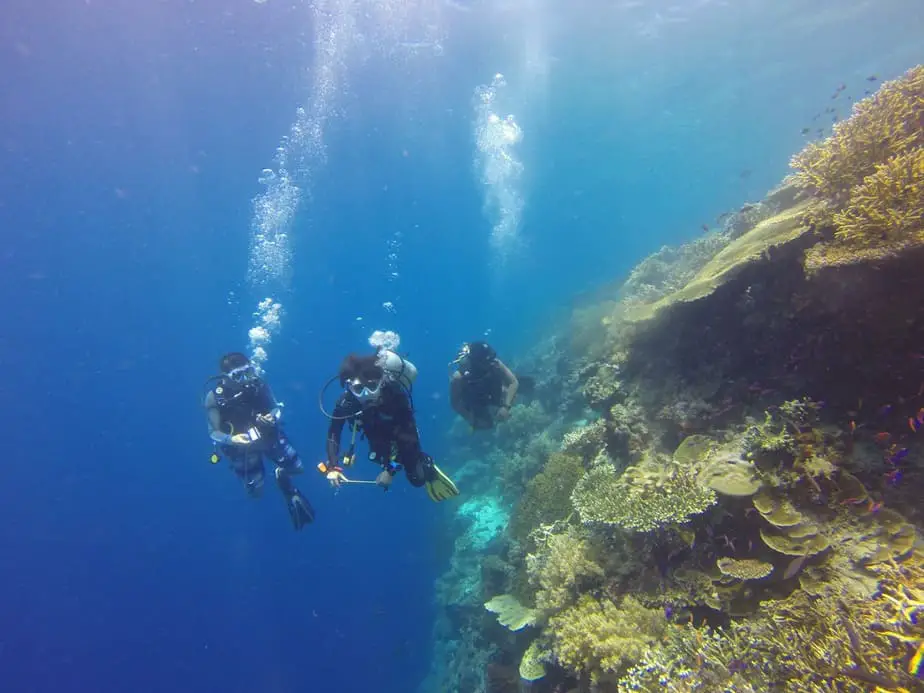
So we’ve been talking about gas narcosis a whole bunch, it’s probably a good idea to discuss why it’s such a big deal. Gas narcosis, often used as a synonym for nitrogen narcosis, refers to the euphoric phenomenon when a diver is breathing gas underwater and feels a variety of adverse effects depending on the depth they are at.
Currently, it’s not 100% clear how narcosis works. However, the current hypothesis is that compressed gases can affect the signal transmission in our central nervous system, causing effects similar to being drunk.
Gas narcosis generally begins to be a serious issue for divers breathing compressed air around a depth of 30 m (100 ft). Theoretically, it can begin occurring even earlier, and the effect worsens as the diver dives deeper.
We mentioned that narcosis gives a euphoric feeling similar to being intoxicated, however let’s dissociate any positive feelings you might have toward this phenomenon. Diving with narcosis is like drunk driving. You’re recklessly endangering your life and the lives of those around you.
The scary thing about gas narcosis is how gradual it can creep up on you and how unaware someone affected by it is. Initially, the effects include mild impairment in judgment; you’ll find it harder to think and solve problems.
As you dive deeper, the intoxication worsens. Your mental and physical reactions are now severely impaired. Simple tasks become monumentally harder to accomplish.
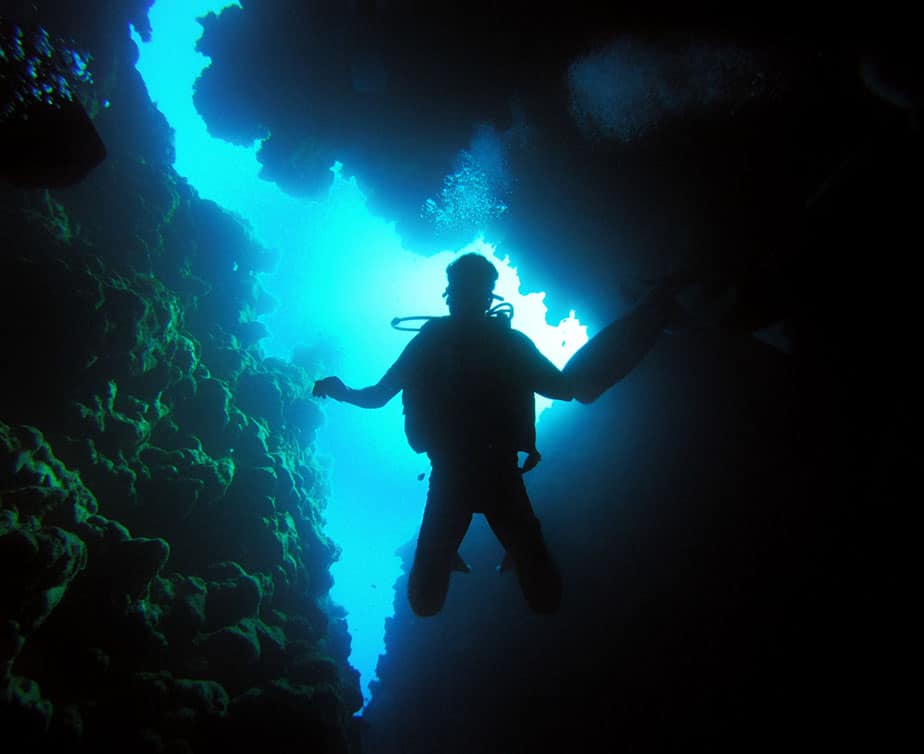
Ultimately, the diver will struggle to focus and will start to lose track of what they should be doing. They might exceed depth limits, or forget to check their pressure gauge, and they’ll generally exhibit very poor judgment.
Divers may start to hallucinate or feel like they are in a dream-like state. In an extreme case, a diver once took off his regulator because he was convinced he could breathe underwater without it. Some adverse psychological reactions are fear, paranoia, panic, and depression.
Now, narcosis itself is not dangerous. The effects are temporary and go away once you reach depths above 30 m. However, during the time that you’re impaired until you safely break out of the narcosis, you are susceptible to doing some dangerous things.
To sum it up, diving while under the effects of narcosis is like diving while drunk. By the way, the effects of alcohol can combine with gas narcosis to make its effects more potent at shallower depths. It’s best not to drink alcohol because it can also cause dehydration, poor sleep, and impairment. You wouldn’t drink and drive, so don’t drink and dive.
Lastly, it’s also worth mentioning that narcosis affects all divers. You cannot train yourself to be immune to its effects, and having a high qualification doesn’t mean you’re more capable of withstanding its effects.
How much helium should you dive with?

When diving with a gas mix that has oxygen, nitrogen, and helium, we call this diving trimix. There is no set concentration for each gas in the mix. You may want more or less helium depending on your needs.
Generally, the deeper the dive, the more helium is needed in order to prevent gas narcosis. The diver will have to plan in advance how deep they want to go and how much helium they intend to breathe. When a dive exceeds 40 m / 130 ft (the maximum depth for recreational diving), then divers will begin to dive trimix.
To determine how much helium is necessary, a calculation determines how much helium is needed to retain the Equivalent Narcotic Depth (END) at the planned depth. If this sounds confusing, well, there’s a reason why technical divers and decompression diving requires plenty of training beforehand. You’ll need to take some technical diving courses to find out the full details.
Downsides to diving with helium
Cost

Unfortunately, the advantages that helium confers to a diver means it comes with a hefty price tag. Hence, the deeper the dive, the more helium is needed, and the more expensive it is. Depending on the dive shop, filling a 12L tank with a combination of oxygen, nitrogen, and helium can cost $20. The same tank filled with just compressed air might only be $5. This difference in price will add up very quickly over time.
However, since your life literally depends on it, then we’d say the safety benefits are worth it. In addition to the extra cost when refilling your tank, you must also consider the cost of paying for the technical diving courses needed to be certified for diving trimix.
Between 2000 and 2011, the price of helium increased by just over 50%, and this affects open-circuit divers more due to how much helium is consumed and then exhaled on a typical trimix dive.
Furthermore, we must also consider that trimix fills require a more complicated blending and compressor setup that not all dive shops are equipped for. Thus, if you do not have a capable dive shop nearby, you will have to go out of your way just to fill your tank with the necessary gas mix. This costs you gas money and time, which is arguably very expensive.
Difference in decompression stops
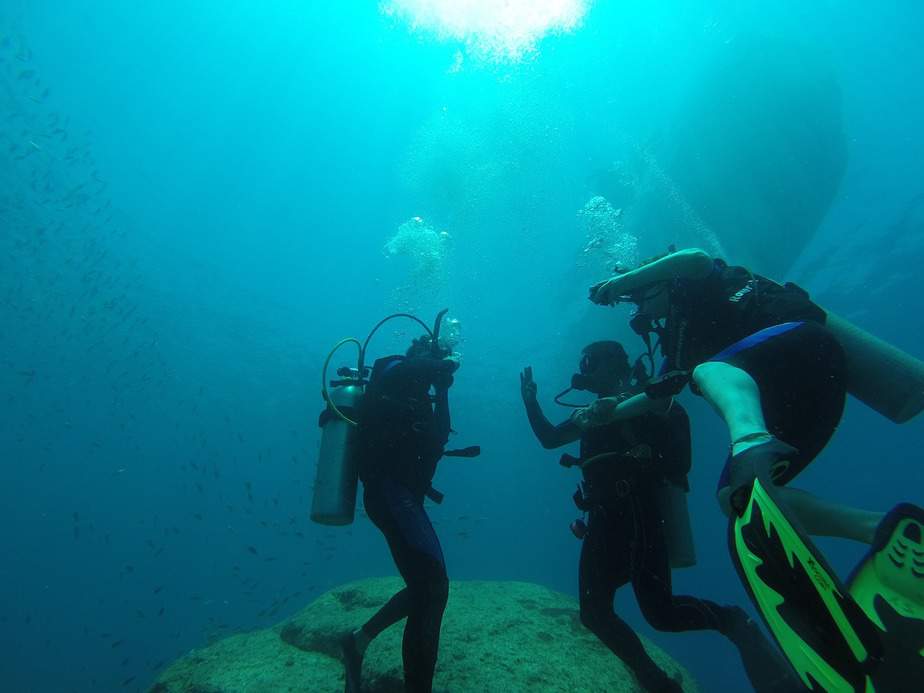
Helium dissolves into our tissues faster than nitrogen, and a consequence of this fact is that dive computer algorithms will calculate that you need to perform a decompression stop at much deeper depths than when diving using compressed air. This may confuse divers who are not used to decompressing so deep and they may forget to do it.
Furthermore, helium off-gases faster than nitrogen and is more likely to cause decompression sickness from a controlled ascent. This can be a major risk for divers who are new to using helium since they will ascend at the normal “safe” rate which may be fast enough to cause bubbles to release when helium is in their tissues.
It conducts heat too well
When diving in a drysuit, you must be careful not to inflate it with your helium tank. Not only is helium expensive as we mentioned, but it also conducts heat six times faster than air. Thus, divers who dive with helium must also bring a separate tank that contains argon to inflate their drysuits.
Argon is the preferred gas to inflate the drysuit because air conducts air 50% faster than argon. Thus, argon is the best choice for preventing hypothermia. You must inflate your drysuit at least a little bit to prevent “squeezing”, which is when the folds of the suit squeezes your skin, causing damage.
Can recreational divers benefit from using helium?

Not really. As we mentioned, narcosis is not really much of an issue until at a depth of 30 m / 100 ft is reached, and it’s generally accepted that even down to depths of 40 m / 130 ft, which is the limit for recreational diving, compressed air is perfectly suitable.
At these depths, divers are still staying within their NDL and are not really under the effects of narcosis. Thus, the advantages of shorter decompression times and narcosis prevention is not really helping out here.
Under optimal conditions, helium is not used until dives are around 50 m / 160 ft and deeper. Depending on the water conditions, if there is poor visibility, strong currents, and low temperatures, then helium trimix may be used from 40 m downwards.
Thus, a recreational diver using helium gas would be wasting money on an expensive gas that is doing what the much cheaper compressed air can do. On top of that, they’d also need to get an expensive technical diving computer to factor helium into its calculations. You also need the appropriate certification in the first place to be allowed to fill your tank with trimix.
If you want a different gas mix other than compressed air for some advantages while recreational diving, then you can change the mix to have higher oxygen concentration and lower nitrogen concentration. This mix is known as enriched air nitrox, and it can help you increase your bottom time, but not dive deeper.
Why do divers want to dive so deep anyways?
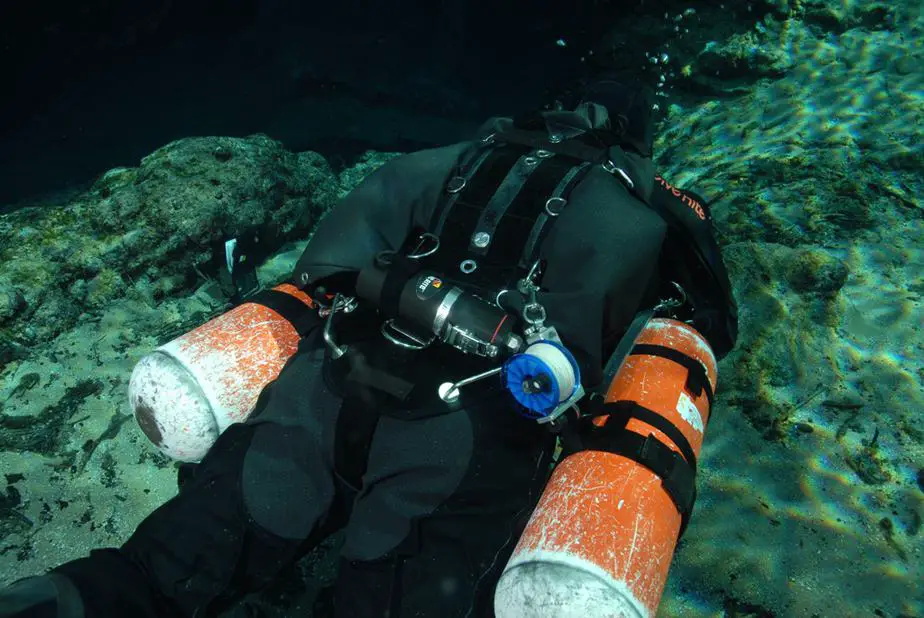
Why not? Humans hate not being able to do stuff. Whenever there’s a limitation, someone somewhere is just trying to surpass it.
A more serious answer is that commercial divers tend to go to such deep depths for work. The most common professional diving jobs, other than scuba instructor, are underwater construction, engineering, working on oil rigs, and so on.
There are plenty of cool places divers can explore once their depth limits are increased. For example, you could explore cave systems, shipwrecks, or recover sunk watercraft.
It takes plenty of training and experience to dive deep, and if you’re currently a recreational diver, you need to amass a large quantity of dives before moving onto technical diving.
Parting words
Helium is not just for making balloons float, party tricks, or making your voice amusingly high-pitched. It has plenty of practical uses in society.
In the context of scuba diving, it has become a ubiquitous part of technical and deep sea diving because it is used in trimix. Unfortunately, not all dive shops are equipped to help fill tanks with trimix.
On top of that, you need the relevant certifications to be able to get a hold of trimix. Helium is expensive, plus the courses you need to take in order to use it are expensive, and you need plenty of dives under your belt to get the experience you need to dive deep. Thus, helium is not something a recreational diver needs to worry about.


